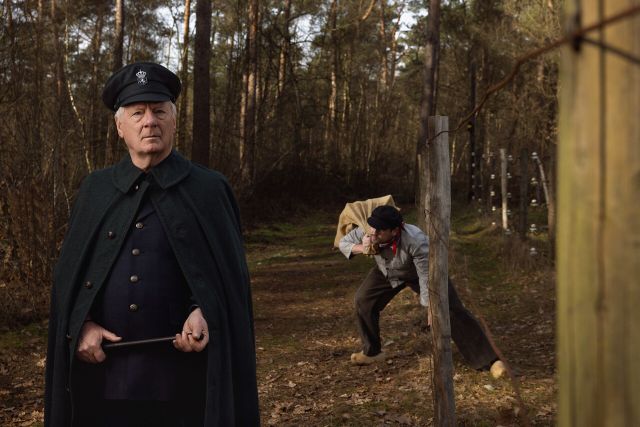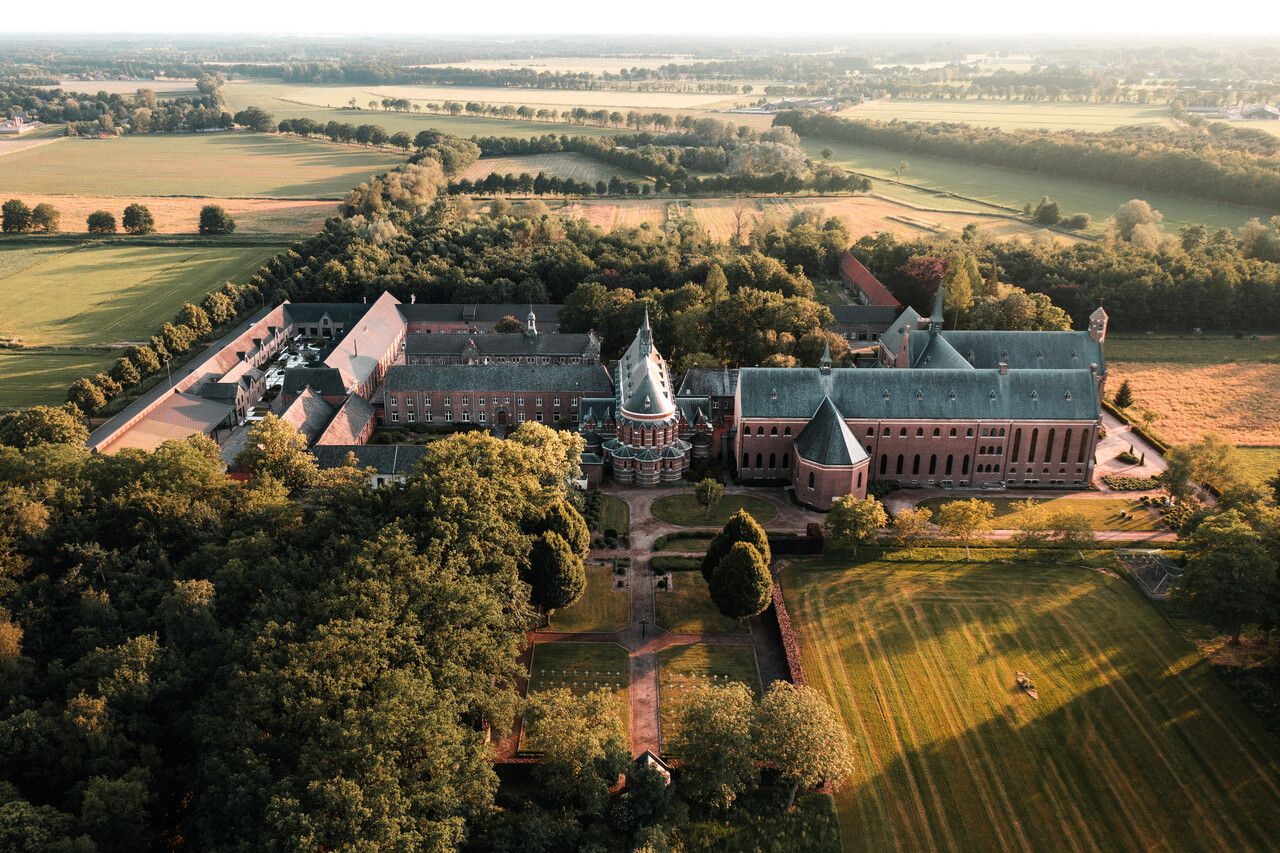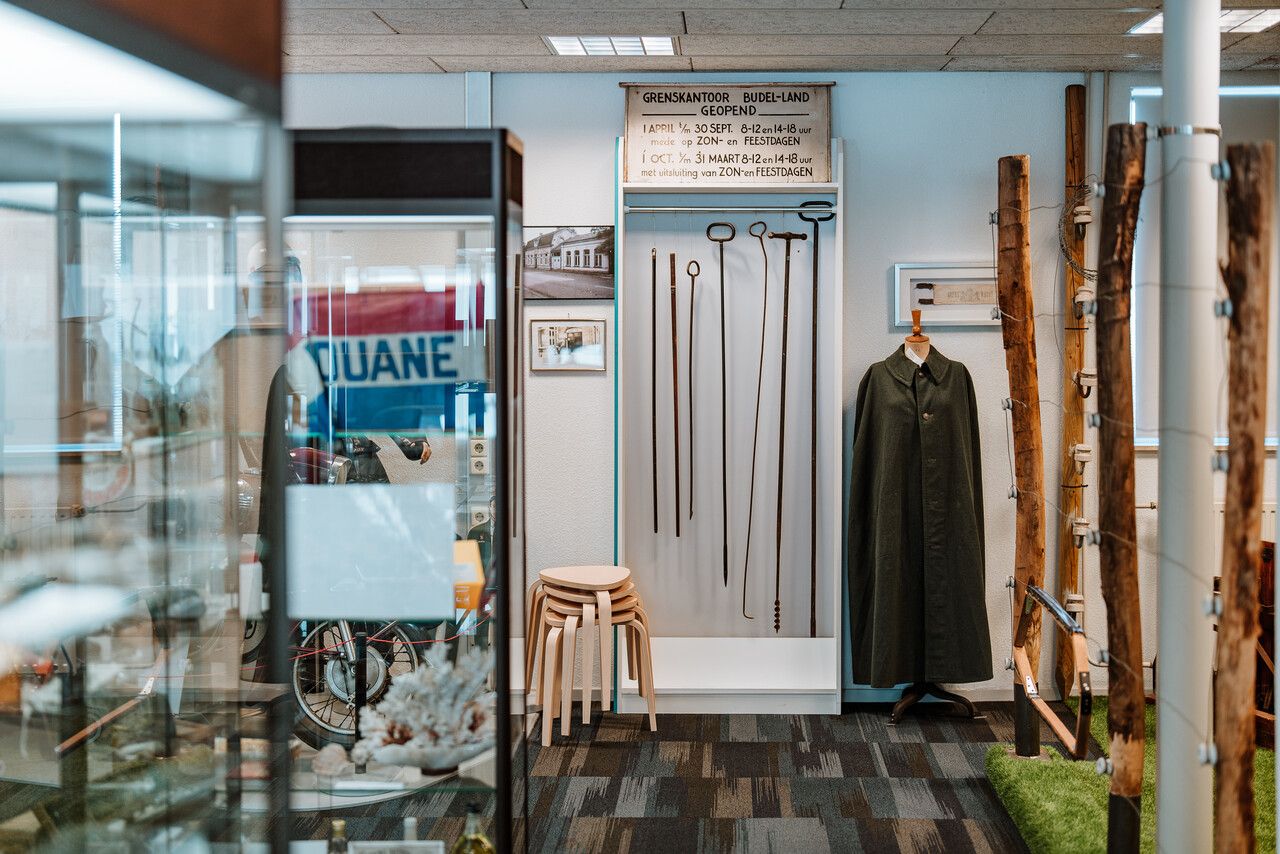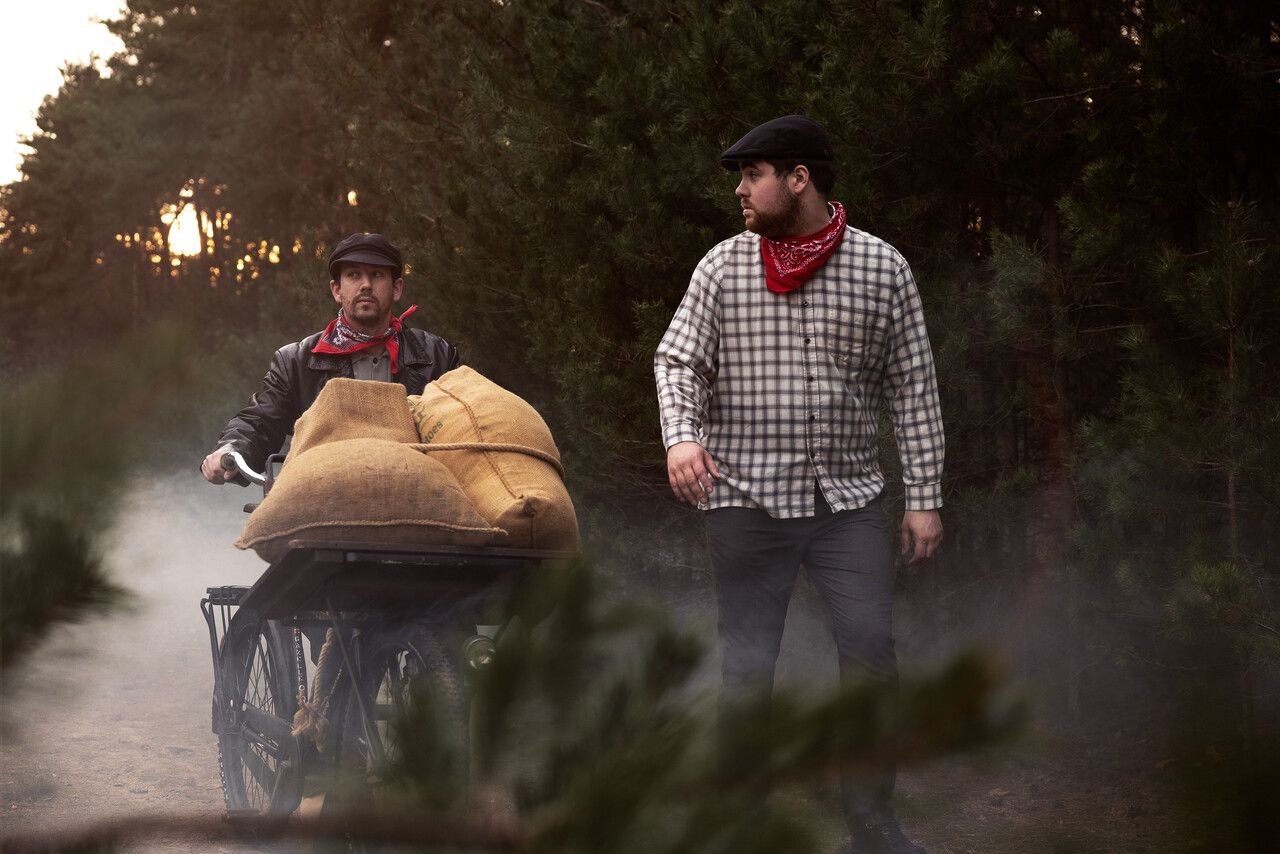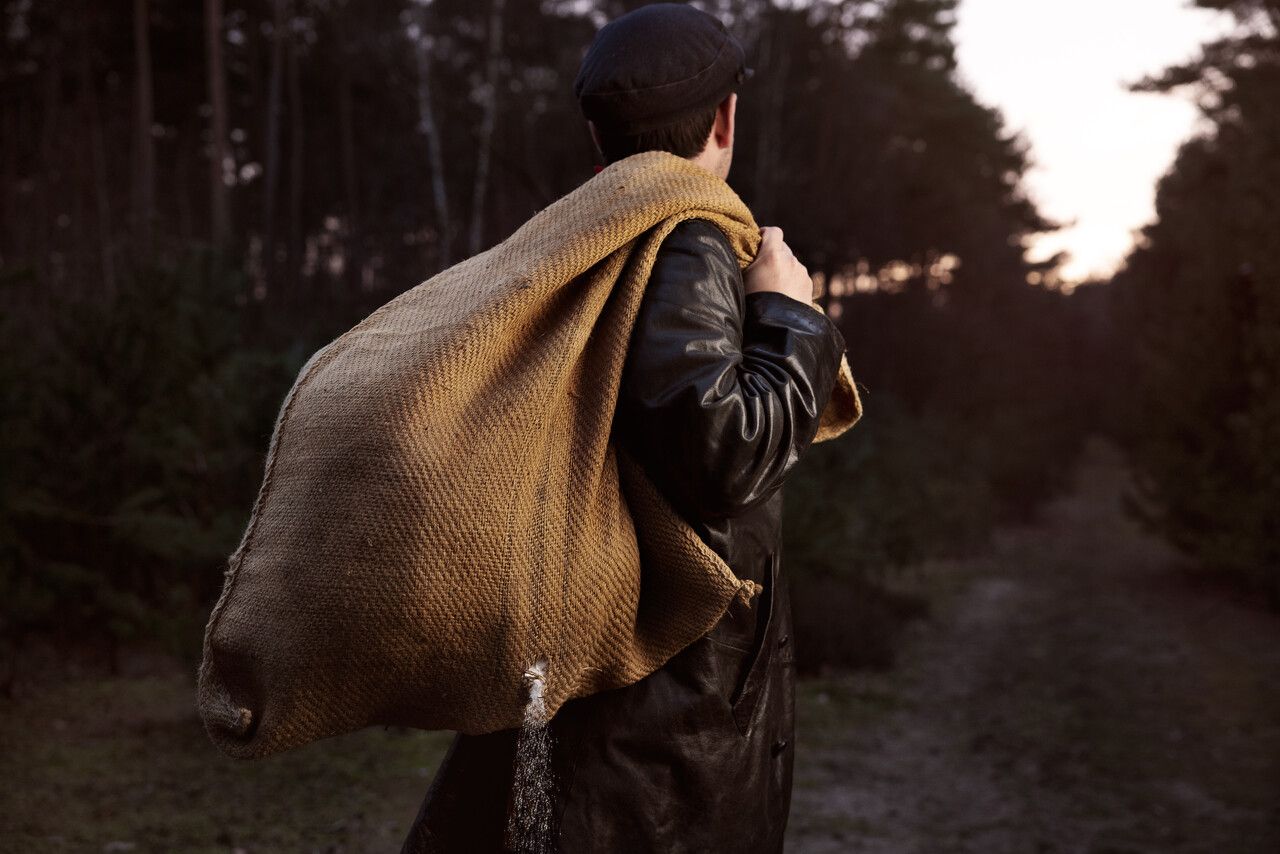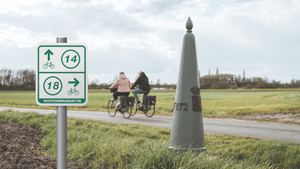Smugglers’ Route De Groote Heide: the smuggler | Border Stories
Learn about the smugglers’ past of De Groote Heide by following this 44-kilometre-long cycle route.
Starting point: from your location
Show all 7 photos
Explore the De Groote Heide nature reserve by following this 44-kilometre-long cycle route. The route takes you over the border and shows you the story of an officer (customhouse officer) or a smuggler in the 1930s. This is the smugglers’ route. For the customs officers’ route, go to this page.
The route begins in the center of Budel Het Schepenhuis (VVV) and goes past several old smuggler paths, customs offices, border posts and border crossings. All are iconic parts of the smuggling story around the border between North Brabant and Belgium. This is a varied route, providing you with a good connection between city, country, the Netherlands and Belgium. You travel through unspoilt countryside and go past charming villages famous for their smuggling past. Play the cat-and-mouse game in the border area of De Groote Heide and follow in the footsteps of the smuggler, using this cycle route of about 44 kilometres.
Dismount and explore ...
Round off you…
Explore the De Groote Heide nature reserve by following this 44-kilometre-long cycle route. The route takes you over the border and shows you the story of an officer (customhouse officer) or a smuggler in the 1930s. This is the smugglers’ route. For the customs officers’ route, go to this page.
The route begins in the center of Budel Het Schepenhuis (VVV) and goes past several old smuggler paths, customs offices, border posts and border crossings. All are iconic parts of the smuggling story around the border between North Brabant and Belgium. This is a varied route, providing you with a good connection between city, country, the Netherlands and Belgium. You travel through unspoilt countryside and go past charming villages famous for their smuggling past. Play the cat-and-mouse game in the border area of De Groote Heide and follow in the footsteps of the smuggler, using this cycle route of about 44 kilometres.
Dismount and explore ...
Round off your cycling adventure by letting the various businesses along the route surprise you with special products, offers and packages that all have to do with the theme of this route.
- Smugglers’ box by Borrelbar KikkerOp and Brasserie De Kapetulie: a box with five different beers.
- Smugglers’ ice by Mamma Mia: mascarpone ice cream with stewed pears, syrup waffles and caramel. Ice cream that hints at the smuggling of butter and sugar.
- Smugglers’ beer by Stoombierbrouwerij De Pimpelier: created especially for the launch of the Smugglers’ route. Also available at De Brasser in Budel.
- Smugglers’ cake by 't Kluutje, together with Bakkerij Rooymans: an amazingly delicious chocolate eclair filled with coffee-flavoured mousse. Also available at De Brasser in Budel.
- Smugglers’ liqueur by Fruitbedrijf Jan Janssen and sweet shop 't Kluutje: a liqueur made from blueberries and a liqueur that tastes of butterscotch.
- Smugglers’ tea by Het Zuyderblad: created especially for the launch of the Smugglers’ route.
About this route
This cycle route was created by VisitBrabant Routebureau. The route was laid out via the North Brabant bicycle junction system. Simply cycle from one numbered junction to the next. Arrows show you the way between the junctions. If you encounter a problem with the route’s signposting, please report this to us via visitbrabant.com/meldpunt. You can also call 0800-4050050 (free of charge).
Route map
Look at this route page on your telephone or download the GPX file. If you prefer to travel with a paper map, a route brochure for this themed route is available and can be downloaded here. The route brochures can also be acquired at the Tourist Information Offices in Cranendonck and in Hamont-Achel.
Border Stories
Border stories demonstrate the versatility of the region of North Brabant in a unique manner. North Brabant is located on the border of the Netherlands and Belgium and between the provinces of Limburg, Zeeland, Zuid-Holland and Gelderland. The border has a rich history with stories about smugglers, closed borders and borderless collaborations. There is a reason why this border has always played an important role in the life of the people of Brabant. Experience routes that have been developed with this theme tell the story of the Brabant border and the unlimited nature of the region. View them all via visitbrabant.com/verhalenaandegrens.
About De Groote Heide
Explore De Groote Heide: a unique trans-border area in Cranendonck, Eindhoven, Heeze-Leende, Valkenswaard, Hamont-Achel and Neerpelt. Within North Brabant, the cross-border area De Groote Heide is a fabulous area for nature, tourism and recreation. Its 6000 ha. of continuous nature reserves with deep purple heathland, fresh green woods, brooks, small rivers and fens as well as many unique cultural-historical panoramic views make De Groote Heide a unique area.
-
Hotline routes
Hotline routesIf there is something wrong on the route, report it here.
Sights on this route
Starting point
Schepenhuis (VVV)
Markt 28
6021 CE Budel
Navigate to starting point
Smuggling Museum Cranendonck
Get to know smuggling in the border region at the museum. The region, situated on the border of the Netherlands and Belgium and bordering on Limburg, is known for its many smuggling practices in former times.
Starting point:
Smokkel en Grens museum CranendonckSchutstraatje 20d
6021cc Budel

Smuggling Museum Cranendonck
Smuggling Museum Cranendonck
Smokkel en Grens museum Cranendonck
Schutstraatje 20d
6021cc Budel
KikkerOp Drinks Bar
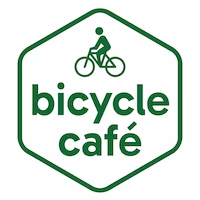
Among the monumental buildings, in the most typical street of Maarheeze, you will find the very child-friendly and hospitable KikkerOp Drinks Bar.
Starting point:
Borrelbar KikkerOpKerkstraat 3
6026 RT Maarheeze
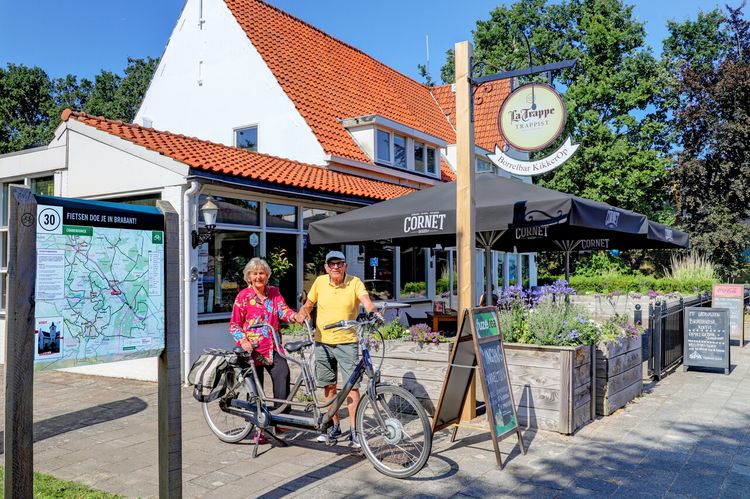
Former village shop/chemist’s
The former shop was known as the distribution point for smuggled provisions.
Starting point:
Damenweg 1Soerendonk

De Strijper Aa
Smugglers often used streams to smuggle goods across the border.
Starting point:
KluiswegGastel
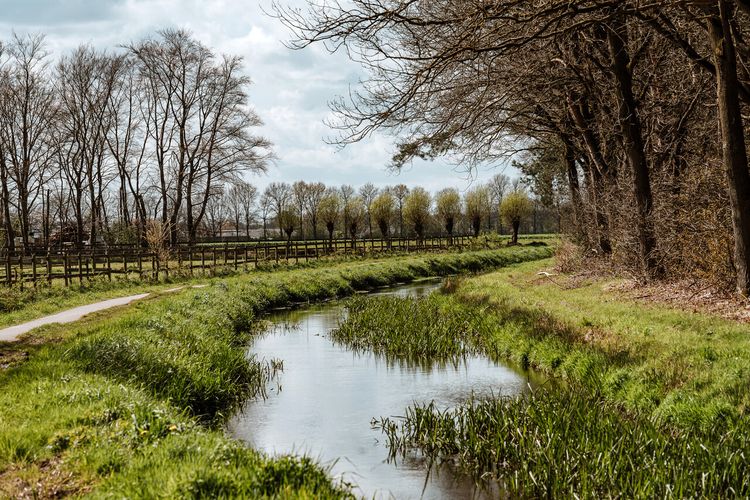
Artwork of the former butter factory and St. Cornelius Chapel
The centre of the smallest residential area of the municipality of Cranendonck, where many residents were involved in smuggling on both a small and large scale.
Starting point:
St. CornelispleinGastel

Artwork of the former butter factory and St. Cornelius Chapel
Artwork of the former butter factory and St. Cornelius Chapel
St. Cornelisplein
Gastel
Den Ezel: National Border Post 174
Famous border crossing for smugglers and now a monument for World War I.
Starting point:
RuiterstraatBudel
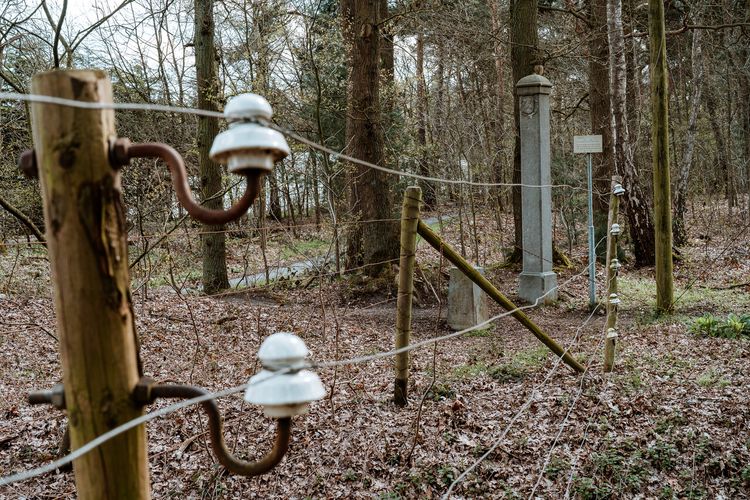
Den Doodendraad and National Border Post 175
Many “pungelaars” (smugglers carrying burlap bags filled with contraband on their backs) followed small forest paths and sandy roads to cross the border along the Budel-Gastel route towards Achel and vice versa.
Starting point:
3930 Hamont-Achel
Den Doodendraad and National Border Post 175
Den Doodendraad and National Border Post 175
3930 Hamont-Achel
The Double Post, National Border Post 176 with Barony Post
A square post with ‘Barony of Hees and Leen’ on one side and ‘Barony of Cranendonck’ on the opposite side, Bergbosweg, Budel.
Starting point:
BergboswegBudel

The Double Post, National Border Post 176 with Barony Post
The Double Post, National Border Post 176 with Barony Post
Bergbosweg
Budel
Location of former Border chapel
In the centre of this heathland region among several remote fens lies the remains of what used to be a conventicle (a secret or unlawful religious meeting), during the period that lasted from 1648 to 1672.
Starting point:
Beverbeekse HeideHamont-Achel

De Achelse Kluis Abbey
It is the starting point for a wonderful walking or cycling trip through the Leenderbos, the Groote Heide or the Beverbeekse Heide. From here, you can also easily reach the charming town of Hamont-Achel.
Starting point:
De Achelse KluisDe Kluis 1
3930 Hamont-Achel
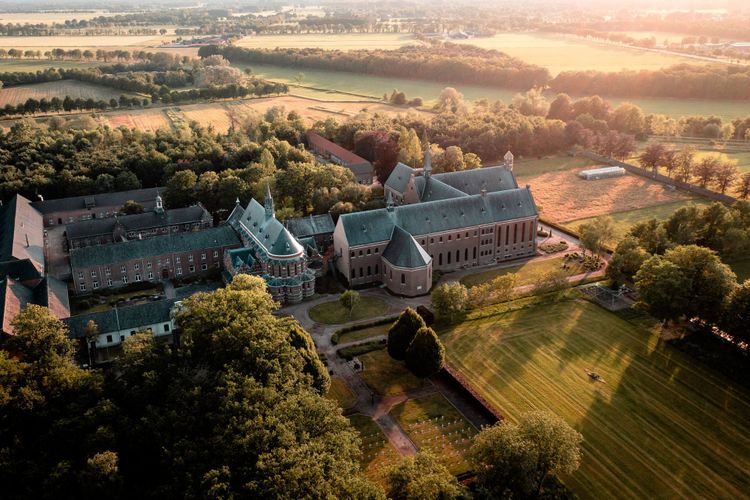
Customs buildings De Acht Zaligheden
They were home to the customs officers of the cyclist brigade and their families.
Starting point:
Achel Statie 1125Hamont-Achel
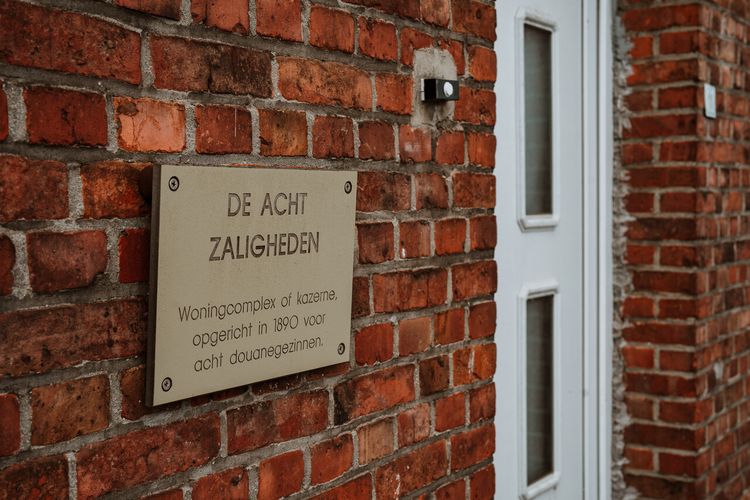
Customs buildings De Acht Zaligheden
Customs buildings De Acht Zaligheden
Achel Statie 1125
Hamont-Achel
Starting point:
GrevenbroekmuseumGeneraal Dempseylaan 1
3930 Hamont-Achel

Chevaux de frise
Reference to measures taken by customs against motorised smugglers.
Starting point:
Burg-KloosterstraatHamont-Achel
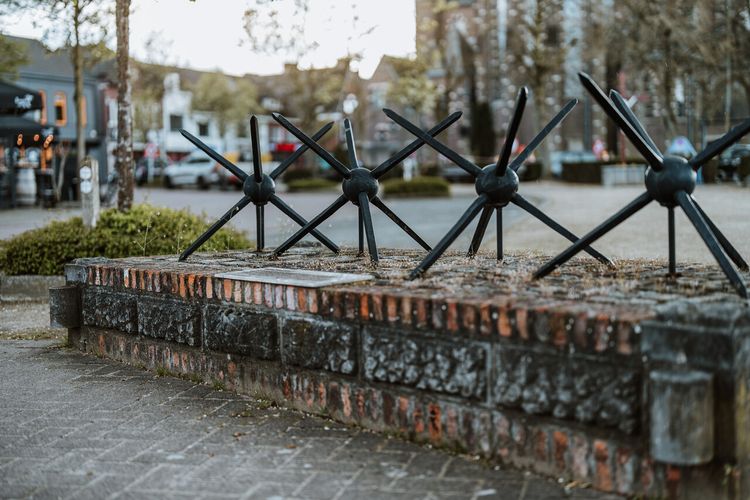
Former customs residences
This building was erected at the crossing of the two roads that led to the border crossings at Budel and Budel-Schoot
Starting point:
Keunenlaan 4Hamont-Achel

Former Belgian customs office
In 1960, a new customs office for both Belgium and the Netherlands was built at the Dutch border.
Starting point:
Grensweg 65Budel
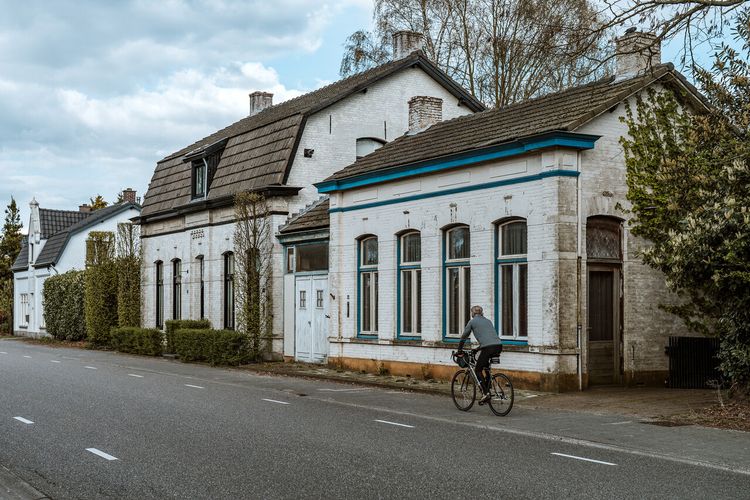
Border crossing with National Border Post 172
The current Belgian-Dutch border was laid down in detail and established officially in 1843. 388 cast-iron border posts were installed along the border.
Starting point:
AsbroekwegBudel
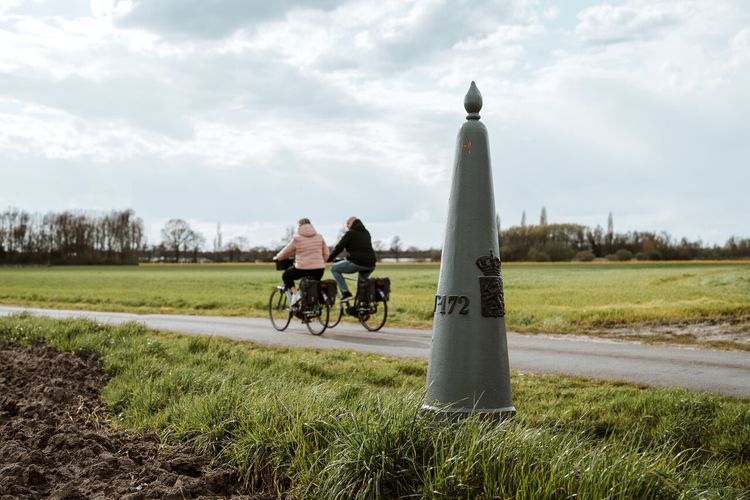
Border crossing with National Border Post 172
Border crossing with National Border Post 172
Asbroekweg
Budel
Story of the route
- The Netherlands – the 1930s. For quite some time, there had been wild stories about smuggling in the border area. Butter, sugar, salt and even lingerie ... anything you could think of – people would bring it over the border for a few extra pennies. For those living in the border region, smuggling had become second nature, a game to outsmart the officers. It was a cold sunny morning and the frozen grass created a white glow as Vanishing John wandered past the farms. He was searching for contraband (3) to smuggle across the border. The grass crunched under his feet. He soon ran into a friend. Together they decided to go for a drink in the pub just down the road. A quick drink to gather some courage.
- A wrinkled old man was enjoying a beer in the back corner of the cafe. He heard the friends talking and grumbled: “You won’t get anywhere that way, smuggling small bits during the day. You’re better off doing one big job at night.” Vanishing John listened to what he said but decided to make an attempt during the day anyway.
- Vanishing John’s friend was carrying a bag of contraband, but not John. John had an ambitious plan. He knocked on the door of the farm just before the border. The famer’s wife, who was in on the plan, beckoned him to go around back where a large cow was waiting. John’s friend looked at his comrade in amazement as John left the property with the cow trudging behind him. They walked towards the woods and looked for a place to cross the border unseen.
- Following a small forest path, they spotted a couple of officers further up the path. Filled with adrenaline, they paced back and forth along the border (16). John, leading the cow, was not as quick as his friend. When his friend decided to cross not much further on, he got stuck in the barbed wire and was caught. John tried to hide as inconspicuously as possible, but the cow had other ideas. Time for the secret weapon. Smearing syrup on the cow’s mouth, the animal walked with him as meek as a lamb without making a sound. The officers were still occupied with his friend stuck in the barbed wire, enabling John to cross the border (6/7). He sold the animal at the bar just down the road. Success!
- Satisfied with the loot, Vanishing John decided to treat himself to a beer in the cafe (10). To his surprise, he saw Cor Commies sitting at the bar. Using the money he had just earned, he bought a bottle of good liqueur from the owner of the cafe. Putting his best foot forward, John walked over to Commies and asked him to turn a blind eye in exchange for the bottle of liqueur. Commies, however, wanted nothing to do with that, and Vanishing John quickly disappeared.
- Later that day, he tried again. He could pick up sixty kilos of sugar at a storage place in the area (3). He borrowed a bicycle and remembered the advice he was given that afternoon: night-time was the best time to make a move. If he could deliver this order in the Netherlands today yet, he would earn as much as a week’s work. At twilight, Vanishing John and his friend headed towards the border with two duffel bags filled with sugar. Just when they thought the coast was clear, Vanishing John saw a shadow in the bushes. It was Cor Commies! He decided to run and, with the full moon acting as a spotlight, shining on the border (7/8), a real cat and mouse game ensued. Would John manage to evade the officers?
- 09
- 01
- 58
- 40
- 04
- 30
- 35
- 34
- 05
- 59
- 41
- 06
- 03
- 39
- 216
- 38
- 36
- 217
- 218
- 564
- 563
- 541
- 568
- 542
- 215
- 12
- 09


